[row][paragraph_left]
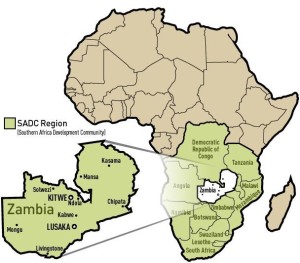 While most 20-somethings grew up picturing Africa through the eyes of Simba, Timon and Pumba, 12 students from CSU experienced “the real Africa” on a three-week service-learning trip to Livingstone, Zambia, this summer.
While most 20-somethings grew up picturing Africa through the eyes of Simba, Timon and Pumba, 12 students from CSU experienced “the real Africa” on a three-week service-learning trip to Livingstone, Zambia, this summer.
Ellen Brinks, an English professor and recently appointed Peace Corps Master’s International program liaison for the English department, was the faculty leader of the program this first year. The group, which was in Zambia from May 22 to June 15, included students from a variety of CSU departments.
Learning through service
African Impact, CSU’s volunteer organization partner, split students into two areas of service based on personal interest: community education and public health.
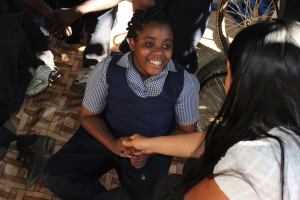 More than half of the CSU students were placed in community education. Each was assigned a class of first- through seventh-graders and taught subjects such as science and math. Most children in Livingstone attend community schools that have no government funding and are paid for solely by the community. Students must pay the equivalent of $7 each trimester to attend school; if they do not have the money, they are dismissed from class. A class of 40 students dropped to four because most students were unable to pay their fees. The students who couldn’t pay stood outside the windows chanting, “we want to learn,” hoping the teacher would allow them back into the classroom.
More than half of the CSU students were placed in community education. Each was assigned a class of first- through seventh-graders and taught subjects such as science and math. Most children in Livingstone attend community schools that have no government funding and are paid for solely by the community. Students must pay the equivalent of $7 each trimester to attend school; if they do not have the money, they are dismissed from class. A class of 40 students dropped to four because most students were unable to pay their fees. The students who couldn’t pay stood outside the windows chanting, “we want to learn,” hoping the teacher would allow them back into the classroom.
“These kids would do anything for the opportunity to learn,” said Jo Buckley, a sophomore international studies major. “Education is a privilege there, and they have to pay for it, so anything you offered they were happy to soak up.”
[/paragraph_left][third_paragraph]
Transforming waste into wealth
African Impact developed a pilot project for the CSU volunteers in addition to their work in education and health. The project was to build a compost bin through a process known as eco-bricking. Eco-bricking is taking plastic waste and putting it into plastic bottles to create “bricks.” Three-hundred plastic bags can fit into one bottle, making them dense enough for building and insulation.
“The waste in Livingstone is a huge issue, as there is no good waste management system that the people can afford,” said Wybenga. “This results in waste lining the streets and waste being burned. Eco-bricks can reduce the waste and then can be used by communities to build things that can be useful for them. African Impact has been educating communities, especially children, on the process, and the kids love to get involved.”
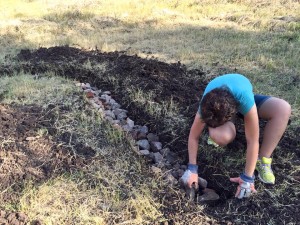
[/third_paragraph][/row]
Katie Wybenga, a senior natural sciences major, and one other CSU student spent their time with the children of Cheshire Homes, a center for Zambian youth with disabilities. The center encourages group learning and has its volunteers lead activities conducive to all abilities.
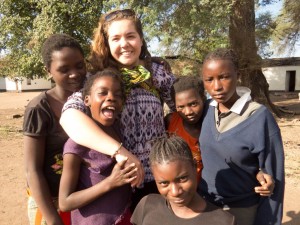 “Their two favorite games to play were ‘duck, duck, goose’ and ‘red light, green light’ because both games could include the students in wheelchairs,” Wybenga said.
“Their two favorite games to play were ‘duck, duck, goose’ and ‘red light, green light’ because both games could include the students in wheelchairs,” Wybenga said.
One CSU student was placed in sports education, a new segment of educational programming that African Impact is working to make part of the national curriculum.
One of the most mentally challenging service areas, according to Brinks, was public health, which she worked on with two of the CSU student volunteers. The team visited clinics in surrounding communities where nearly 100 people waited to see a doctor each day.
“In most of these clinics there is running water, but no electricity or medical equipment we would recognize,” Brinks said.
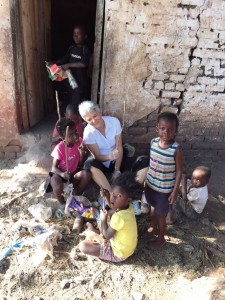 Volunteers were charged with checking in patients, taking vitals and charting for patient records. Brinks worked closely with the antenatal patients, weighing babies and administering vaccinations. Due to the limited number of physicians in the clinics, volunteers were expected to take on a high level of responsibility, which — much to their surprise — included delivering a baby.
Volunteers were charged with checking in patients, taking vitals and charting for patient records. Brinks worked closely with the antenatal patients, weighing babies and administering vaccinations. Due to the limited number of physicians in the clinics, volunteers were expected to take on a high level of responsibility, which — much to their surprise — included delivering a baby.
“The women were not allowed to cry out, yell or moan, while having contractions and pushing,” said biology major Alexandra Orahovats. “They had no way to relieve the pain medically, so all they could do was breathe. In that moment I really appreciated having access to medicine at home and, probably more importantly, my contributions to the world as a female.”
Brinks and the students volunteering in public health projects also assisted with home-based care, visiting communities and providing care for those who were too sick or poor to make it into the clinics. Victims of HIV and AIDS were at times abandoned by their families, making the pairing of care with health education that much more important. Health talks at clinics and schools tackled pertinent issues such as HIV and AIDS, cervical cancer, safe sex, breast feeding and nutrition. Clinic workers instructed teachers in HIV education to prepare for an adult literacy class, which is set to become part of the national curriculum.
All work and no play?
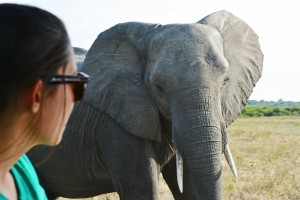 On weekends Brinks and the students used their free time for excursions. These included a two-day safari tour of Chobe National Park, visiting a traditional African village and exploring Victoria Falls, one of the Seven Wonders of the World.
On weekends Brinks and the students used their free time for excursions. These included a two-day safari tour of Chobe National Park, visiting a traditional African village and exploring Victoria Falls, one of the Seven Wonders of the World.
A “free Saturday” allowed the group to visit destinations outside of the itinerary. For many students this meant rafting and a sunset cruise on the Zambezi River, though cooking classes and return visits to Victoria Falls were also popular.
University contributions
The College of Liberal Arts and the Department of English donated $750 to African Impact and the Happy Africa Foundation. The money was used to purchase school supplies and fund the drilling of a water pump at one of the community schools.
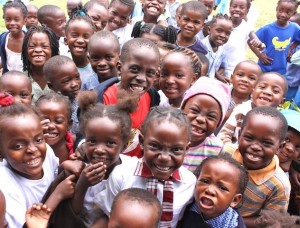 A portion of the donation was used to purchase soccer balls for the Livingstone children, and any remaining funds went to eco-bricking, a project specially created for CSU by African Impact (see story above right).
A portion of the donation was used to purchase soccer balls for the Livingstone children, and any remaining funds went to eco-bricking, a project specially created for CSU by African Impact (see story above right).
Students from the English department maintained a blog, and Honors Program students documented their experience online as well.
“What this trip has left me with a greater awareness of is the wealth that Zambia holds,” said Alexandrea Pinion, an English major and student blogger. “It’s not a material wealth, but a wealth of culture, friendship, family, and art. It’s a wealth of the things I really care about, that express human potential in a way that maybe we aren’t used to in the Western world.”
Get involved
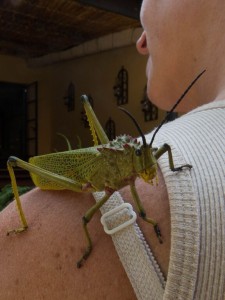 Planning is already in the works for next summer’s trip. Tentative dates are May 22-June 11, and the program will once again be led by Brinks. Program coordinators hope to find ways to support students over the next year to fund the 2016 trip. A three-credit independent study course titled “Reading and Writing the Zambia Experience” is available for students who wish to receive credit for the trip. Interested applicants can visit CSU’s Education Abroad website for more details; anyone is welcome to apply.
Planning is already in the works for next summer’s trip. Tentative dates are May 22-June 11, and the program will once again be led by Brinks. Program coordinators hope to find ways to support students over the next year to fund the 2016 trip. A three-credit independent study course titled “Reading and Writing the Zambia Experience” is available for students who wish to receive credit for the trip. Interested applicants can visit CSU’s Education Abroad website for more details; anyone is welcome to apply.
“There’s a seismic shift that happens after really experiencing Africa for all that it is, which I think is the point of the whole program,” said Brinks. “It’s about enriching students in ways they cannot get in a classroom and allowing them to imagine possible futures for themselves.”